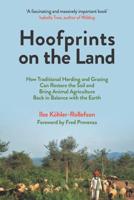Publisher's Synopsis
Sugar has often been cited as one of the most policy distorted and volatile markets of all agricultural commodities. Much of this is blamed on the high level of support and protection provided to sugar industries in OECD countries and occasionally elsewhere. These policies have led to high sugar prices for producers in protected countries, while at the same time depressing not only the returns of low cost producers in developing countries but also their trade opportunities. This report begins with an outline of the characteristics of the international sugar market and attempts to answer, in some cases with the aid of a policy specific world sugar model, the following questions. How does the international market for raw and white sugar function? Who are the leading producers, consumers and traders of these different types of sugar? How important are government support policies for sugar producer's returns? Do national policies contribute to distortions in sugar production, trade and world prices and, if so, by how much? Which countries and policies are the main offenders? Who are the likely beneficiaries of reform? Under what circumstances will consumers not benefit from lower prices with sugar policy reform? Do sugar policies exacerbate the volatility of world sugar prices? The report then reviews and analyses the main provisions of the February 2006 reform of the Common Market Organisation (CMO) for sugar in the European Union, the first fundamental reform since the establishment of the CMO in 1968. In particular it throws light on the following questions. How do the agreed reform provisions compare with those of the former regime? What are the major changes? What are the likely impacts of the reform provisions on the evolution of the domestic market and the EU's role in world sugar markets? How will the EU's WTO export subsidy limits and expected higher imports from LDC countries under the Everything But Arms initiative play out? Will the sugar reforms affect agricultural support levels in the EU? Finally, how would the EU sugar industry have evolved in the absence of the 2006 reforms?










